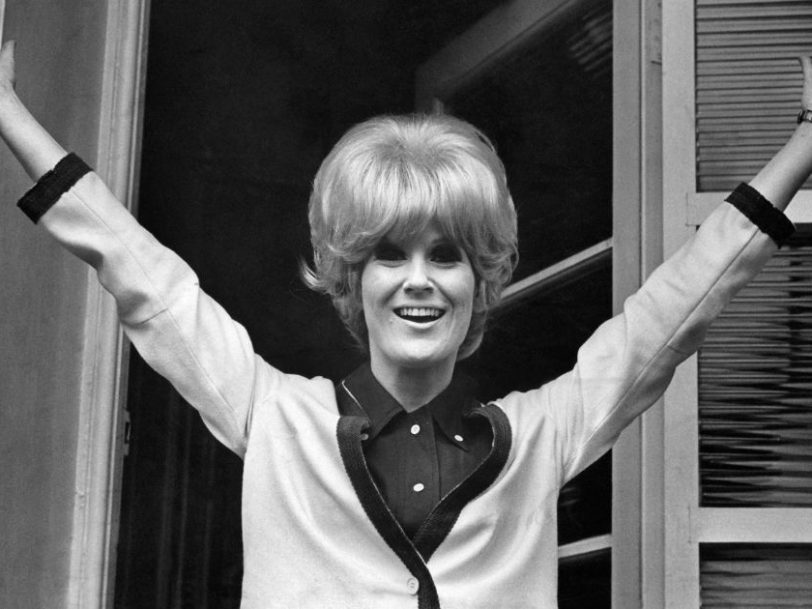“I hated it at first,” Dusty Springfield said in 1993, of her 1969 album, Dusty In Memphis. “I hated it because I couldn’t be Aretha Franklin.”
Springfield’s love for and support of Black American music was well established by the late 60s. She had helmed a TV show, The Sound Of Motown, in 1965; consistently talked about US R&B artists in interviews; covered songs by Marie Knight, Carla Thomas and Margie Hendrix; and was prepared to get political in standing up for racial equality, as she did in 1964 when she refused to play for segregated audiences in apartheid South Africa. However, her admiration for African-American music battled with her legendary insecurity while recording her finest album. “If only people like Jerry Wexler could realise what a deflating thing it is to say, ‘Otis Redding stood there,’” Springfield said. “Or, ‘That’s where Aretha sang.’ Whatever you do, it’s not going to be good enough. Added to the natural critic in me, it was a paralysing experience.”
The backstory: Springfield heard herself in the songs
Jerry Wexler, producer and partner in Atlantic Records, admired Springfield’s early- and mid-60s work. When Springfield stipulated that she would only sign with Atlantic if Wexler was her producer, he was thrilled, and readily agreed. Wexler would soon get a crash course in the mix of self-doubt, brilliance, perfectionism and drama that made up Springfield’s complex personality.
Listen to the Atlantic 75 playlist here.
The first task was to choose the songs. Wexler found 80 possibilities; Springfield liked precisely none of them. The musicians who Wexler had organised had to be sent home. Producer and artist agreed to meet up again a few weeks later.
When they came together again, Wexler was more focused in his choices – selecting 20, which had been narrowed down from the original glut of 80, and including songs from the Brill Building teams of Gerry Goffin and Carole King, and Barry Mann and Cynthia Weill. This time, Springfield heard herself in them and liked them all. Recording could begin.
The recording: “I sort of grew up as the album progressed”
The legendary Muscle Shoals studio, where Atlantic had recorded so many famous sessions, was fully booked. Instead, Springfield and Wexler (along with co-producer Arif Mardin and engineer Tom Dowd) went to American Studios in Memphis – somewhere “funky and primitive”, as Wexler described it.
“We learned not to wait for Dusty before we started,” Wexler said of these Memphis sessions. Springfield – anxious not only about her self-perceived vocal limitations, but also her physical ones – had an enormously time-consuming daily ritual of hair, make-up and clothing. Seemingly ridiculous to many who became exasperated with the delays, Springfield’s fear of her flaws was nevertheless very real to her. She seemed to want to hide Mary O’Brien (her real name) behind a wall of “Dustyness” – beehives, mascara, sequins. However, even with her defences set at max, she struggled with vocal performances at Memphis.
Perhaps without realising it, and just like with the hair and make-up, Springfield had become used to walls in her recording career to date. “I was someone who had come from thundering drums and Phil Spector, and I didn’t understand sparseness,” she has said of the Dusty In Memphis sessions. Instead of the full orchestra she was used to, in Memphis she had a handful of celebrated musicians who would work and create with her instead of generating a sheet of noise for her to sing above. “I wanted to fill every space,” she continued. “I didn’t understand that the sparseness gave it an atmosphere. When I got free of that I finally liked it, but it took me a long time.”
Most of the vocal performances heard on Dusty In Memphis come not from Memphis, but instead New York City, in a studio without musicians, and just Wexler, Mardin and Dowd present. Springfield’s trick for overcoming her self-doubt was to literally obliterate her own voice. When recording, she consistently asked for greater and greater volume in her headphones. Wexler resisted at first, believing that her vocals would suffer – but when Springfield said, “Bring up the track! I can still hear myself!”, even when the volume was skull-splitting, Wexler finally understood the psychology of the woman he was working with. He duly agreed, and not only did Springfield hit every note perfectly, her vocals gained that elegant, airy quality that’s such a distinctive feature of Dusty In Memphis.
The release: “I feel I can do much more now than I’ve ever done”
Released on 18 January 1969, Dusty In Memphis is alternatively tough and vulnerable, reflecting the singer herself – her spaces, breaths and sighs are as important as her words. The Memphis Horns and backing singers The Sweet Inspirations punctuate the album with additional emotion, and the subtle influences range from composer Ravel, on In The Land Of Make Believe, to Eastern European folk music, on The Windmills Of Your Mind. Most famous of all was Son-Of-A Preacher Man, a Southern soul narrative that was equal parts Ode To Billie Joe and Try A Little Tenderness. It would be Springfield’s final Top 10 hit in the UK, until 1987, when a collaboration with Pet Shop Boys brought her to a new audience.




